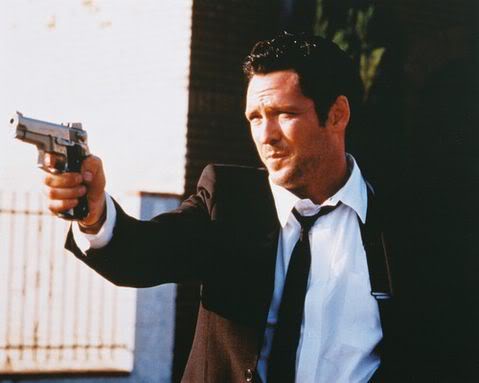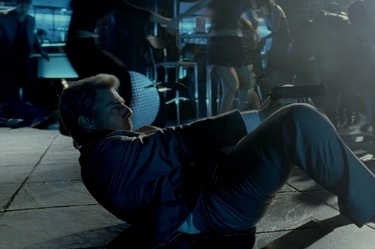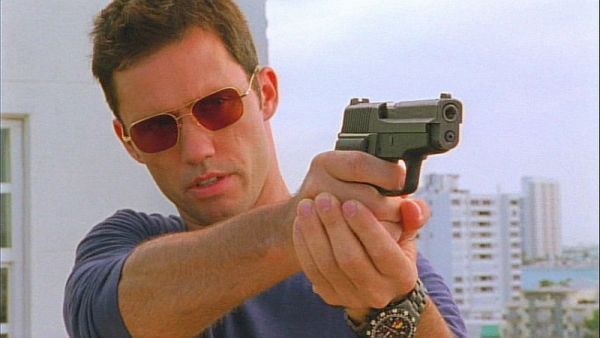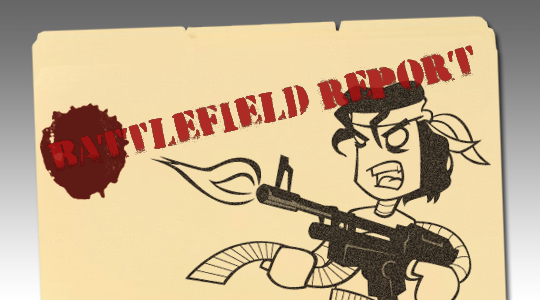Traditionally, games have portrayed military and special ops characters as being unrealistically proficient. Part of the reason for this is to distance video games from reality while still drawing in players by emulating logical assumptions based on real occurrences - if it makes sense that Aerosol + Bullet = Xplosion, then the entertainment industry will embrace that.
Shooting stances are a major part of these perceived violent scenarios. If the hero looks like a pro holding a gun...well, we've already taken that turn back there at Logic Street. Splinter Cell: Conviction took this concept a little farther and tried to incorporate something more real and unique than any other game has show so far: the C.A.R. (Center Axis Relock) stance. Did it succeed in impressing an action game fan and sport shooter? Let’s explore.
First, a little bit of history...

Michael Madsen as Mr. Blonde demonstrates 'point shooting' in Reservoir Dogs
Classically, the U.S. Army and allied nations taught a method of self-defense called “point shooting”, which is almost as simple as shooting gets. The shooter can either fire from the hip, or stretch their shooting hand out at the target as best they can while hammering away at the trigger. It’s a bit frantic and really only effective in really close quarters. Since the aiming vector of a short-barreled firearm changes drastically with only a little bit of wrist movement, point shooting was taught as a last resort...and still is, in fact.

Tom Cruise as Vincent demonstrates the 'isosceles stance' while on his back in Collateral
A little more stable is the “isosceles stance”, or as the overcompensating elitists like myself call it: the Lady Grip. It consists of holding the pistol out in front and locking your elbows - literally an isosceles triangle when viewed from overhead. This stance will ensure a good aiming platform...but in a combat situation it lacks freedom of movement.

Jeffrey Donovan as Michael Westen demonstrates the 'Weaver stance' in Burn Notice
In 1959, however, a competitive pistol shooter named Jack Weaver developed what became known as simply the “Weaver stance”. This two-handed style of aiming - in which the strong arm is extended as far as possible, while the weak arm provides support and backward tension - departed from wild-west speed drawing and focused more on getting bullets to the target more precisely. It also helped with recoil management, which was an issue among carriers of semi-automatic pistols (.45 caliber being the most common, which has a real bear kick compared to .38 caliber service revolvers). Weaver style is very popular now, especially among those trained with firearms. So familiar is it with film fans, gamers, and shooters alike that it has spawned a one-handed style and other variations with keep the aiming arm extended and bent.
